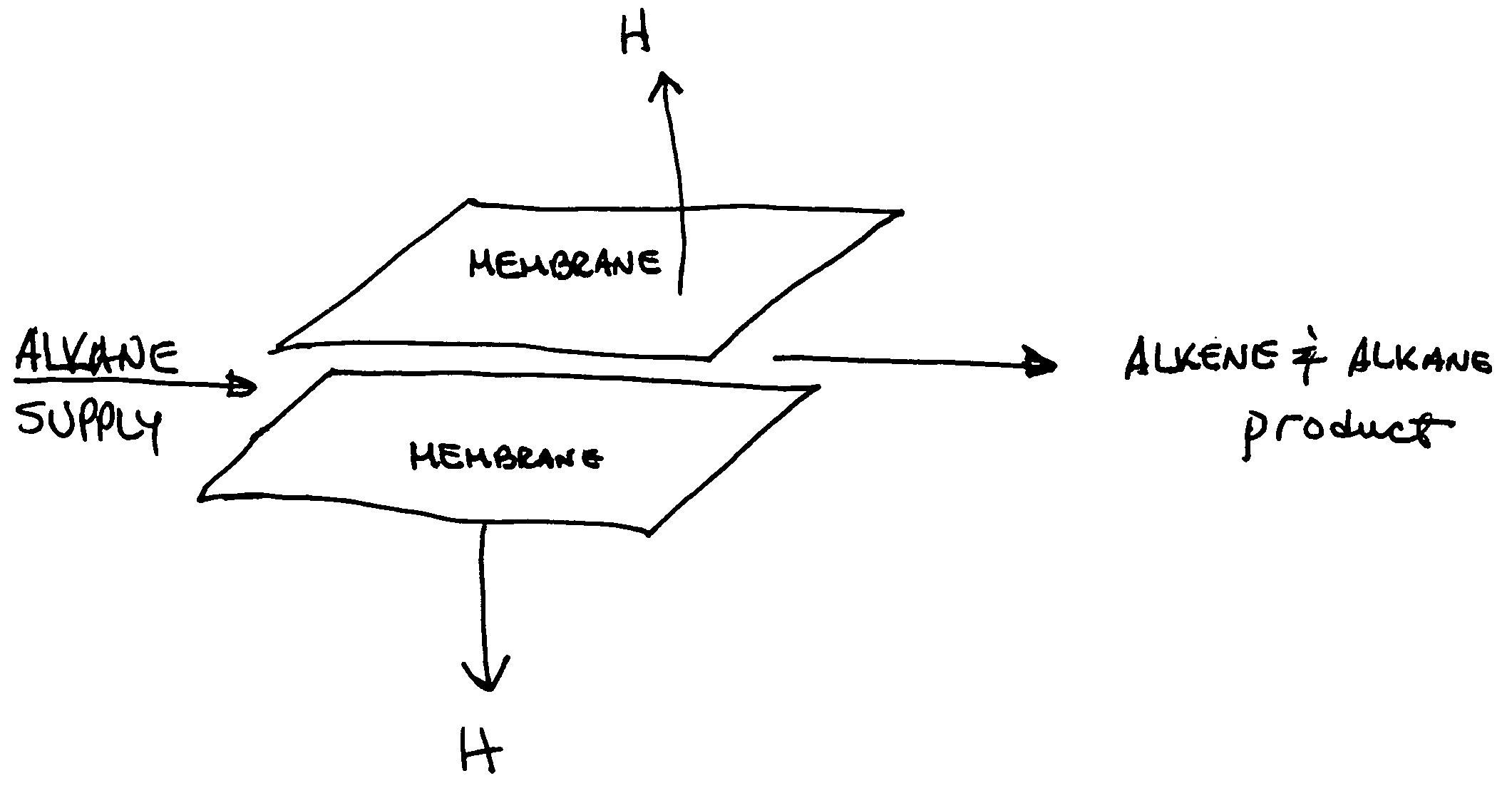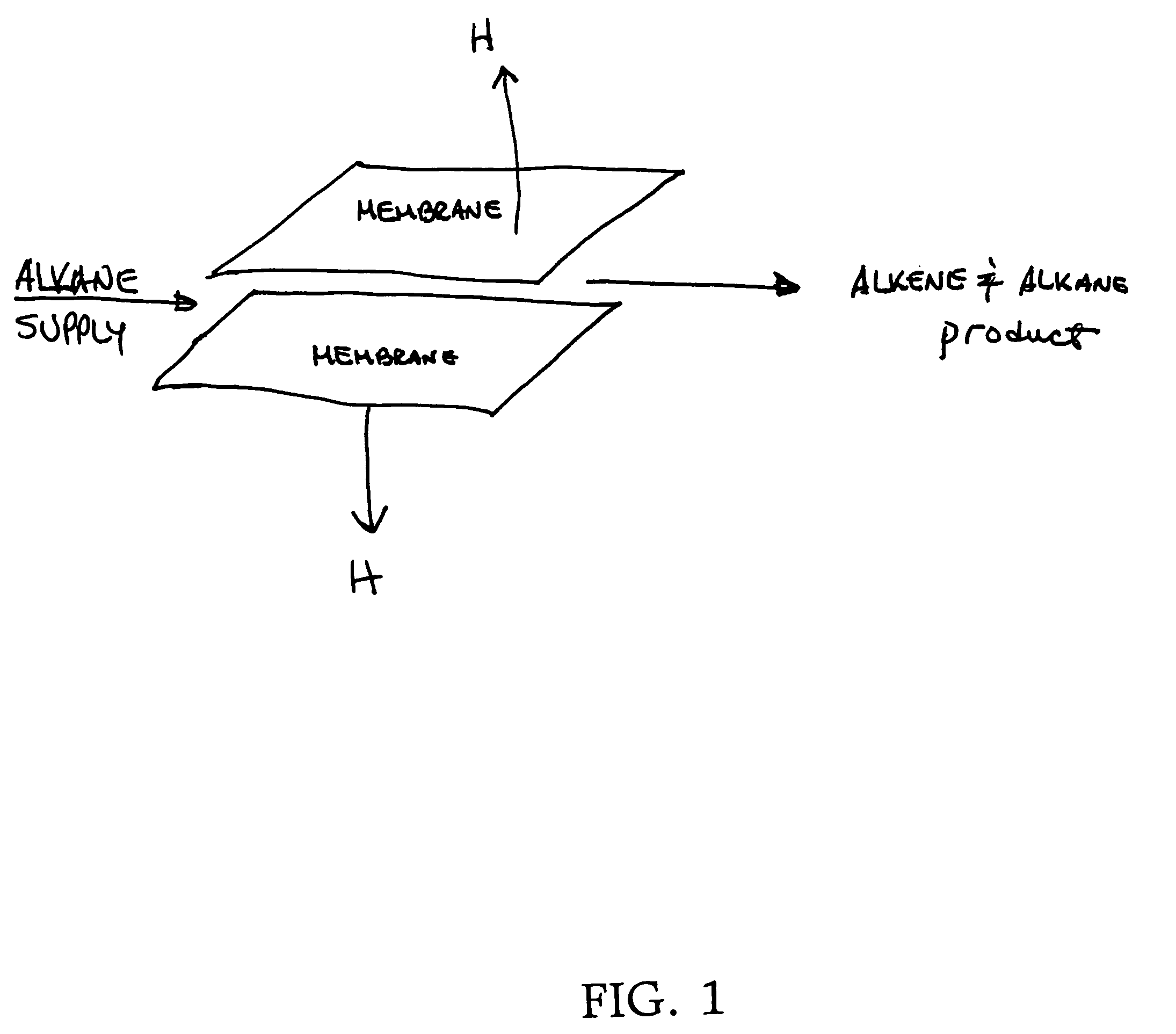Hydrogen transport membranes for dehydrogenation reactions
a technology of transport membrane and dehydrogenation reaction, which is applied in the direction of hydrocarbon preparation catalyst, separation process, organic chemistry, etc., can solve the problems of poor conversion yield and selectivity, energy intensive, and limited equilibrium conversion thermodynamically, and achieve excellent selectivity and high yield
- Summary
- Abstract
- Description
- Claims
- Application Information
AI Technical Summary
Benefits of technology
Problems solved by technology
Method used
Image
Examples
Embodiment Construction
[0014] This invention relates to membranes disclosed in U.S. Pat. No. 6,569,226 issued May 27, 2003, the entire disclosure of which is incorporated by reference. The membranes of the present invention may be in sheet form or tubular form or honeycomb form, the latter being illustrated in U.S. Pat. No. 5,356,728 issued Oct. 18, 1994, the entire disclosure of which is incorporated herein by reference. Membranes of the type disclosed in the '226 patent separate hydrogen from a feedstock containing hydrogen. However, it is has been discovered that when feedstocks contain alkanes, use of the membranes disclosed in the '226 patent remove hydrogen from the alkanes converting same to alkenes or olefins with very high activity and very high yield. While the membranes disclosed in the '226 patent are operable for the present invention, it has been found that certain of the membranes which pass or are permeable to atomic hydrogen rather than protons and which do not pass electrons are preferab...
PUM
| Property | Measurement | Unit |
|---|---|---|
| thickness | aaaaa | aaaaa |
| thickness | aaaaa | aaaaa |
| temperature | aaaaa | aaaaa |
Abstract
Description
Claims
Application Information
 Login to View More
Login to View More - R&D
- Intellectual Property
- Life Sciences
- Materials
- Tech Scout
- Unparalleled Data Quality
- Higher Quality Content
- 60% Fewer Hallucinations
Browse by: Latest US Patents, China's latest patents, Technical Efficacy Thesaurus, Application Domain, Technology Topic, Popular Technical Reports.
© 2025 PatSnap. All rights reserved.Legal|Privacy policy|Modern Slavery Act Transparency Statement|Sitemap|About US| Contact US: help@patsnap.com


